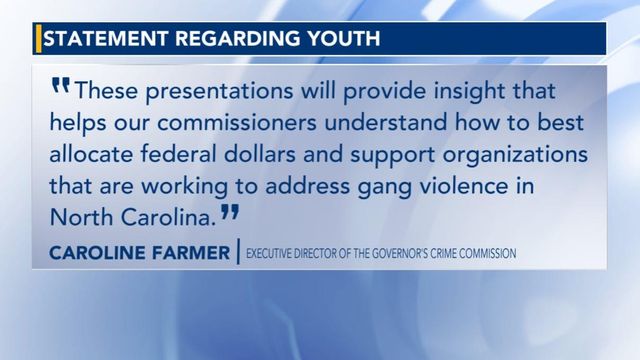Weapons offenses, suspensions rising at NC schools, new data show
The number of reportable criminal offenses —including those involving weapons — at North Carolina schools rose last school year, reversing years of improvements, according to new data released Wednesday from the Department of Public Instruction.
Offenses rose for possession of weapons and controlled substances, and suspensions and dropouts also rose.
The data reflect North Carolina’s backslide in student progress since the COVID-19 pandemic prompted disruptions at school and elsewhere. That slip is reflected in declining test scores and nationally in surveys on student behavior; the vast majority of public school leaders have said the pandemic negatively affected student behavior, according to a federal survey.
Offenses related to possession of a weapon were 30% higher than five years prior. Offenses rose from 2,534 during the 2017-18 school year to 3,292 during the 2021-22 school year. Assaults involving use of a weapon rose from 41 to 62.
Data show 161 firearm offense is the highest number recorded in the past 15 years. Weapons offenses, however, are not at their peak; the number of weapons offenses was higher every year between the 2006-07 and the 2012-13 school years, ranging from 3,427 weapons offenses to 3,954 weapons offenses.
In February alone, dozens of threats, most of them unfounded, disrupted several school days in the Triangle. At least 10 weapons were found on Triangle-area campuses, and at least five people were charged with weapons offenses, including several juveniles.
Offenses related to possession of a controlled substance rose from 4,604 during the 2018-19 school year to 5,250 during the 2021-22 school year.
“We know that the pandemic and its aftermath have created significant challenges for students, educators and their schools,” state Superintendent Catherine Truitt said in a statement. “We’re taking aggressive steps to respond this year, and we’re seeking more resources for next year to provide students with the help that they need.”
The state provided $74.1 million in safety grants for schools this year that’s being used for school resource officers and physical infrastructure upgrades, among other things. The State Board of Education is also asking the North Carolina General Assembly to provide $100 million for more social workers and nurses to address students’ physical and mental health needs.
A single weapon may be counted multiple times if multiple students were cited for offenses related to that weapon.
The reportable offenses rose, after years of improving. In the 2000s, schools had about eight offenses per 1,000 students. That dropped to close to six incidents per 1,000 in the 2010s. But the number went back up last year, to 7.5 incidents per 1,000 students.
The numbers rose in the state’s largest school system, the Wake County Public School System, as well, after years of improving.
The district recorded eight offenses related to firearms and 442 offenses related to weapons last year, up from five offenses related to firearms and 192 offenses related to weapons during the 2018-19 school year. The eight weapons offenses is the second-highest total in the past decade, after 13 offenses were recorded during the 2016-17 school year. But the 442 weapons offenses was higher than in any year in the past decade, in which weapons offenses typically totaled above 300 in a year but did not surpass 400.
Spokeswoman Lisa Luten said that’s consistent with rising gun ownership and crime in the larger community.
“Remember, schools are just one part of the overall community,” Luten wrote in an email to WRAL News. “So, any trend that occurs in the larger community will occur in subsets of the community.”
Karen Fairley, executive director of the Center for Safer Schools at DPI, made several recommendations for improving school environments on Wednesday:
- Recognize students’ cultural differences and conduct “cultural awareness training”
- Help parents and guardians with preventative measures, such as ensuring their children are socially connected to their peers and understanding child development
- Employ a social worker at every school
- Train staff to on “trauma-informed” practices for working with students who are struggling
- Ensure that school resource officers are building positive relationships with students, in addition to taking punitive action toward students
Aside from reportable criminal offenses, data released Wednesday also show more students missing school for behavioral issues and more students choosing to leave school altogether before obtaining a high school diploma.
State Board of Education Member Amy White suggested part of the solution is ensuring children perform well academically at younger grade levels, so they are interested in school more when they are older.
“High performing students … are less likely to misbehave in a classroom because they are engaged,” White said.
More dropouts
More North Carolina high school students dropped out of school last year than in any of the five years previously.
Last year, 11,663 students dropped out, up from 10,091 students the year before and 7,935 students the year before that — two years in which students learned remotely at least some or all of the time.
It’s a figure that’s also up from 9,991 during the 2018-19 school year and from 10,939 during the 2017-18 school year.
Racial disparities in suspensions and expulsions
Short-term suspensions rose to 146.57 per 1,000 students last year, up from 130.95 per 1,000 students during the 2018-19 school year. That’s the highest rate since the 2012-13 school year, when 167.95 suspensions were handed down for every 1,000 students.
But the reality of suspension looks different to different students. Black students were suspended the most — 303.78 suspensions for every 1,000 students. Students with disabilities were suspended at a rate of 249.79 suspensions for every 1,000 students. Rates were also higher for American Indian students (242.84), students of two or more races (178.96) and male students (196.66).
Those disparities contrast with the State Board of Education’s stated strategic goals of eliminating those disparities, and the board isn’t making progress, Board Member James Ford said during the board’s meeting Wednesday.
“Year after year nothing really gets done,” he said.
Vice Chairman Alan Duncan noted the severity of punishments is often at the discretion of school employees, rather than a uniform policy.
Kids misbehave similarly, across races, Ford said, but it’s clear not everyone believes that.
“I grow tired of seeing the same thing over and over again,” he said. “I don’t feel the sense of urgency just in general around the true robbery of educational rights that is taking place here.”
Truitt said disparities vary considerably, even among students of color, and noted the additional problem of more students with disabilities being suspended.
“This is what drives parents to leave public schools,” Truitt said. They go to smaller private schools that they feel will provide more one-on-one attention to there children, she said, and the state needs to figure out more about why these disparities exist.
Board Member Wendell Hall said cultural differences among students, in terms of what they consider normal body language, for example, can lead people to draw different conclusions about a student’s behavior.
Fairley said her office is working on training school personnel on students’ cultural differences. The office is also keeping an eye on districts that are successfully improving disparities to see what is working, as well as placing extra focus on schools with the greatest number of disciplinary issues.
“Next year you will see more improvement,” Fairley said. “We are getting out in the hedges and the highways, compelling teachers, law enforcement officers… to come to the table to hope us with this.”
Long-term suspensions rose from pre-pandemic levels but remain well below what they were just six years ago, as rates of those types of suspensions have long been declining. The same is true fo alternative learning program placements.
Expulsions of student are exceedingly rare, but that number rose, as well. Last year, 48 students were expelled from North Carolina public schools, up from 23 during the 2018-19 school year.
CORRECTION: The number of reportable criminal offenses involving a weapon being found on a school campus rose 60% from four years ago but just 30% from five years ago. An earlier version of this story incorrectly stated the rise from five years ago.












